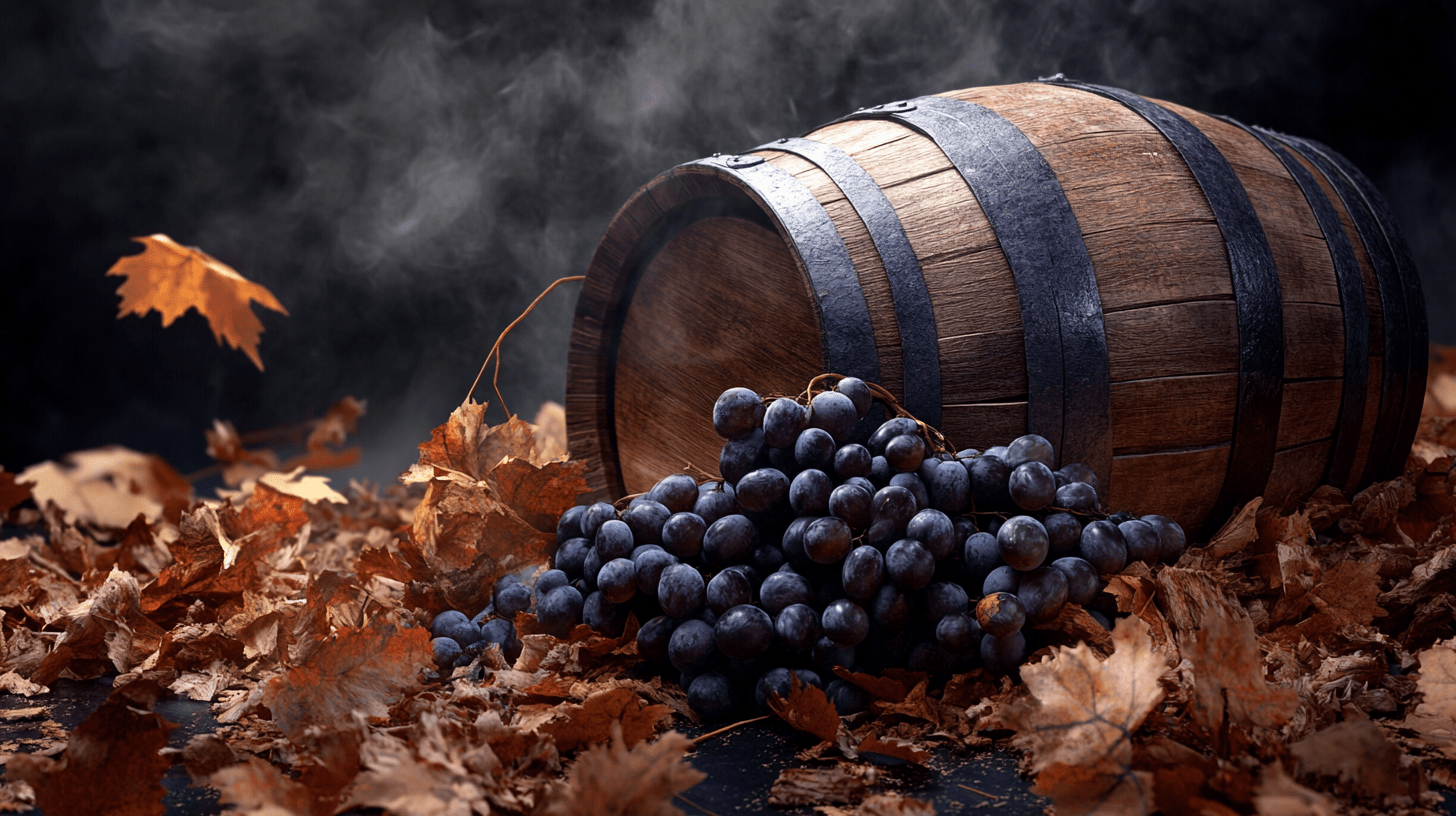When it comes to winemaking, the choice of oak barrel plays a crucial role in the development and profile of the wine. Among all oak options, American and French oak barrels are predominantly favored for their unique characteristics and contributions to wine’s aroma, flavor, and texture. However, the debate over which oak is superior has long sparked discussions among winemakers and wine enthusiasts alike. In this blog, we will explore the key differences, advantages, and drawbacks of each oak variety, helping you make an informed decision when considering wine oak barrels for sale.
Understanding American Oak Barrels
When it comes to choosing the right barrel for your winemaking endeavors, the allure of American oak barrels is hard to overlook. Not only do these barrels offer a more budget-friendly option than their French counterparts—making them an attractive choice for both home winemakers and large-scale wine barrel suppliers—but they also bring a unique flavor profile to the table that can transform a humble grape into something truly extraordinary. Crafted primarily from Quercus alba, American oak barrels are renowned for imparting robust flavors such as vanilla, coconut, and caramel to wine. For those who love their wines with a bit more “character,” American oak certainly delivers. In fact, the flavors are so distinct that they have been compared to the rich notes you’d get from a carefully crafted dessert, but, you know, in liquid form. Want your wine to feel like a warm hug? American oak might just be your wine’s new best friend.
However, it’s not all sunshine and creamy goodness. The more porous nature of American oak allows for greater oxygenation, which can accelerate the aging process. The result? A more expressive wine in less time. But, dare we say, there’s a caveat. Some winemakers argue that this very characteristic might overpower more delicate varietals. Think of it as inviting a world-famous opera singer to a jazz trio—one voice may end up dominating if not handled with care.
Despite potential overpowering flavors, the appeal of American oak barrels remains high, especially among producers of New World wines. These winemakers often embrace bold and experimental flavors, viewing American oak as a strong partner in their quest for innovation. As a result, American oak has become synonymous with dynamic, vibrant wines that push traditional boundaries. To get a taste of these distinctive flavors, one might start by exploring the versatile options available, such as a handcrafted 13.2-Gallon French Oak Barrel with its exceptional flavor attributes here.
“Wine is the only artwork you can drink.” — Luis Fernando Olaverri
With its distinct characteristics, partnering with American oak barrels could be your next step towards crafting unforgettable wines. So, whether you’re looking at your next barrel aging wine project or simply perusing wine barrels for sale, consider the robust American oak for its rich and transformative potential.
Decoding the Mystique of French Oak Barrels
When it comes to adding that extra je ne sais quoi to wine, French oak barrels truly stand apart. Revered for their unparalleled elegance and finesse, these barrels are crafted predominantly from Quercus robur and Quercus petraea. What makes French oak particularly intriguing is its tighter grain, which facilitates a more subtle flavor integration compared to its American counterpart. This fine grain density is the key to the distinctive flavor profile, infusing wines with nuanced notes of spice, toast, and nuts without overshadowing their intrinsic characteristics.
For those seeking premium French oak barrels that elevate complexity and length on the palate, the choice often involves compromise in terms of cost. This is due largely to the labor-intensive cooperage process and lower availability of raw materials. Despite the heftier price tag, many winemakers are steadfast in their preference for French oak; a survey conducted by Wine Business Monthly revealed that 65% of winemakers believe French oak contributes a more refined flavor profile to their wines than American oak.
It’s not all about the price or the craftsmanship, though. As the legendary winemaker André Tchelistcheff once said:
“The voice of the terroir speaks more articulately through French oak.”
Indeed, French oak barrels aren’t just a vessel; they are a partner in the dance of fermentation. They offer a suite of flavors and textures that enhance, not contrive, the drinker’s experience. For those passionate about crafting sophisticated wines, French oak represents more than a choice in wood; it’s a commitment to elegance. Perhaps that’s why winemakers like California’s Paul Hobbs happily invest in the additional cost, noting: “You can’t replicate what happens in those classic barrels.”
Comparative Analysis: Flavor Profiles and Wine Compatibility
The journey from grape to glass is a nuanced one, where the type of oak barrel can dramatically alter the final flavor profile of wine. Both American and French oak bring distinctive characteristics to the table, and understanding these can greatly influence a winemaker’s choice of oak barrels, impacting even the dynamics of barrel sales in the wine industry.
American oak, known for its prominent aromatic compounds, tends to impart robust flavors that shine in full-bodied, fruit-forward wines such as Zinfandel and Shiraz. Notably, the presence of lactones in American oak can introduce vanilla, coconut, and even dill-like aromas. This isn’t the kind of spice you’d sprinkle on your taco, but rather a bouquet that enhances the fruity notes of these wines, making them rich and indulgent. As wine expert Josh Raynolds once said,
“American oak barrels can add another layer of sweet vanilla and a broader sensation in the mouth, complementing the intense fruit flavors of wines like Shiraz.”
In contrast, French oak offers a more refined contribution to the wine’s palate, often chosen for its ability to add nuanced, spicy tones that underline the complexity of wines like Burgundy or Cabernet Sauvignon. The tight grain of French oak results in a slower release of flavors, allowing for a subtle, integrated finish. When winemakers want that elusive aroma of allspice or a delicate hint of clove, French oak becomes the material of choice. It’s no wonder that those considering the Premium 13.2-Gallon French Oak Barrel find it a match made in vinicultural heaven for wines requiring finesse.
The decision between American and French oak—the Batman vs. Superman of the barrel world—is deeply rooted in the intended outcome of the wine. Will it be a bold, unpretentious offering ready to wear its heart on its sleeve, or a more sophisticated, mysterious wine that takes time to reveal its layers? By understanding these differences, winemakers can select the most suitable oak barrels for winemaking, ensuring that each wine reaches its full potential in flavor and complexity.
Economic Considerations: Costs and Availability
When navigating the labyrinthine world of winemaking barrels, one can’t help but notice the stark difference in economic feasibility between American and French oak wine barrels. This difference is as pronounced as the contrasting landscapes of Napa Valley and Bordeaux. Budget-conscious wineries often gravitate towards American oak for its cost-effectiveness. Thanks to the bountiful American forests teeming with Quercus alba, the American oak’s abundance translates into affordability. It’s akin to buying a cup of coffee from your local diner rather than splurging on a gourmet brew in a Parisian café—except, of course, the cup might age your Chardonnay to perfection without breaking the bank.
On the flip side, the allure of French oak lies in its exclusivity and the unparalleled craftsmanship involved in its production. French oak originates predominantly from carefully managed forests, such as Allier, Nevers, and Vosges. This sustainably sourced hardwood undergoes a meticulous drying process, often air-dried for two to three years, a notable effort that inevitably hikes up the cost. As industry experts frequently note with a knowing nod, “You pay extra for French oak, but what you’re really investing in is sophistication.”
Reports suggest that the price of a new French oak barrel can range from $850 to $3,600, significantly higher than an American counterpart, which averages between $360 and $1,000 This investment is often justified by the nuanced flavors and aromas it imparts to the wine—notes of vanilla, spice, and, dare we say, a smidgen of Gallic flair.
“Cost is always a consideration when selecting oak,” says winemaker John Doe. “American oak may be a bargain, but if you’re after that perfect oaky finish, French oak is your ticket to greatness.”
For wineries scaling up operations, sourcing wine oak barrels for sale in bulk is common practice, especially when looking to age wine across large volumes efficiently. However, for those willing to indulge in the more costly French options, it’s a long-term enhancement to the wine’s character, making it a worthy discussion point at any wine connoisseur’s dinner table.
Ultimately, whether you’re lured by the budget-friendly American option or captivated by the elegant nuances of French oak, both choices bring their unique flair to the art of winemaking. Depending on what you want your wine to say—or perhaps sing—rests entirely upon which path you choose, be it the traditional or the avant-garde oak barrels for winemaking.
The Role of Oak Barrels in Wine Maturation and Preservation
When it comes to mastering the fine art of winemaking, the role of oak barrels extends far beyond merely hosting the beloved grape juice. Oak barrels are pivotal in shaping not only the flavors but also the maturation and preservation of wine—a feat akin to grooming a puppy into a gentle old dog that’s everyone’s best friend. The decision to buy oak barrels for winemaking should therefore be as deliberate as choosing the right shoes for a marathon, particularly when faced with the choice between American and French oak varieties.
The choice impacts more than just tannin and flavor; it shapes the entire aging process. French oak, with its fine grain and subtle tannins, gently oxygenates the wine—a technique well-suited for creating intricately flavored vintages meant for the patient wine lover. This moderate exchange of oxygen facilitates a graceful evolution, encouraging nuanced flavors that only reveal themselves with time—kind of like the plot twists in a classic novel.
On the other hand, American oak barrels are the sprinters in the winemaking marathon. Their more pronounced grain structure allows for a more aggressive exchange of oxygen, accelerating the aging process. This makes them ideal for producing wines that are bright, forward, and can be enjoyed in a shorter timeframe. As Mike Veseth, the acclaimed wine economist, suggests, “American oak barrels are perfect for winemakers looking to maintain the vibrancy and youthfulness of their wines.” While not ideal for every style, they cater to a market that appreciates both speed and spunk.
In essence, the choice of oak is akin to choosing a dance partner. Whether you prefer the elegant waltz of French oak or the lively salsa of American oak, it’s clear both styles significantly impact wine maturation and preservation in distinct yet complementary ways. The ultimate decision could be determined by your specific winemaking goals—be it crafting a stately Bordeaux variety or a lively Chardonnay. Oh, the choices!
Sustainable Practices and Innovation in Oak Barrel Production
In a world where climate change has shifted from a cautionary tale to a glaring reality, the wine industry is uncorking solutions with innovation and sustainable practices. American and French oak barrel manufacturers are taking a leaf, quite literally, from the sustainability handbook to create eco-friendly wine packaging, including premium oak wine barrels. By integrating seasoned oak barrels and sustainable harvesting techniques, these industry leaders are making strides in environmental responsibility—without sacrificing quality or those delightful tasting notes we adore in our wines.
One of the significant sustainable practices undertaken by oak barrel manufacturers is the sourcing of wood. According to the Forest Stewardship Council (FSC), responsible wood sourcing means ensuring trees are harvested at a rate that maintains the forest’s biodiversity and ecological balance. This approach means we can toast to Mother Nature’s good health while enjoying our next glass of vintage Bordeaux or boutique California red.
Furthermore, some cooperages have started experimenting with solar-powered kilns. Who knew that barrels were catching rays? This not only reduces energy consumption but also adds a light, sunny disposition to your wine (figuratively speaking, of course). The coopers’ guilds have invested in research and development to perfect these techniques, ensuring that each barrel, be it a French Oak Barrel or a sturdy American one, meets the standards of sustainability-conscious vintners.
“Our goal is to blend time-honored traditions of cooperage with innovative technology to preserve our natural resources,” says a representative from Tonnellerie Radoux, a leader in sustainable barrel manufacturing.
Innovation doesn’t end with the treatments of the wood itself. Some manufacturers are developing adhesives that minimize pollutants and switching to water-based finishes that emit fewer volatile organic compounds (VOCs). This might sound like the kind of chemical jargon that sends shivers down your spine, but it’s actually a giant leap for grape kind. These efforts ensure that the final product—the humble yet sophisticated oak barrel—leaves a smaller carbon footprint.
As you dive deeper into the world of oak wine barrels, prospective buyers and connoisseurs are encouraged to consider these sustainable practices. It’s not just about finding wine oak barrels for sale at competitive prices; it’s about supporting a wine culture that values environmental stewardship. So the next time you sip, remember, your indulgence can be as much about preserving the earth as it is about savoring your favorite blend.
Conclusion: Choosing the Right Oak for Your Winemaking Needs
In the grand debate of American versus French oak, choosing the right oak wine barrels boils down to personal preference and specific winemaking goals. Like selecting the perfect cheese to accompany your wine, it’s a matter of taste—and budget. French oak is known for its subtle impact, enriching wines with refined flavors of vanilla and spice, perfect for those Chardonnay or Pinot Noir whisperers aiming to infuse an elegant complexity. Ah, the beauty of nuances! On the other hand, American oak barrels, with their bold, robust personality, are the cabernet enthusiasts’ delight, offering stronger flavors of vanilla and coconut that speak volumes in every sip.
But wait, there’s more! Decisions are never just about flavor. Considerations such as cost and availability play a pivotal role. French oak, often more expensive due to its scarcity and the labor-intensive methods required in production (Source: wineeconomics.org), calls for a larger investment. In contrast, American oak can offer more barrel for your buck without compromising quality.
Ultimately, which oak you choose to embrace in your wine barrels for sale venture isn’t about the debate over complexity versus charisma, but rather aligning with your winemaking desires, whether you’re spinning a mellow tale or a bold narrative. As the ever-wise Baudelaire once said,
“A bottle of wine contains more philosophy than all the books in the world.” – Louis Pasteur
And just as different philosophies cater to different minds, so do the barrels that cradle your wine. Dive in with informed choices and watch your creations flourish! For those still on the fence, exploring special edition oak barrels might tip you towards your preferred flavor profile. After all, wine is an adventure best savored on your own terms.







